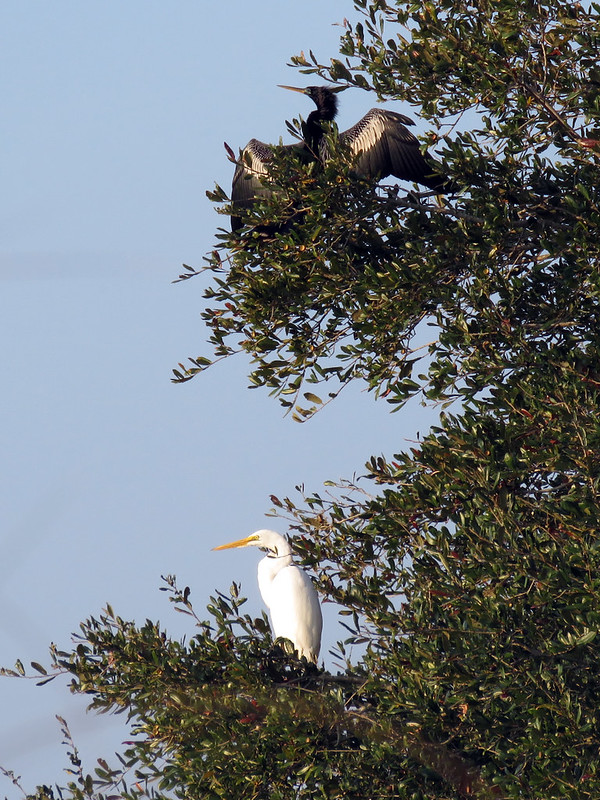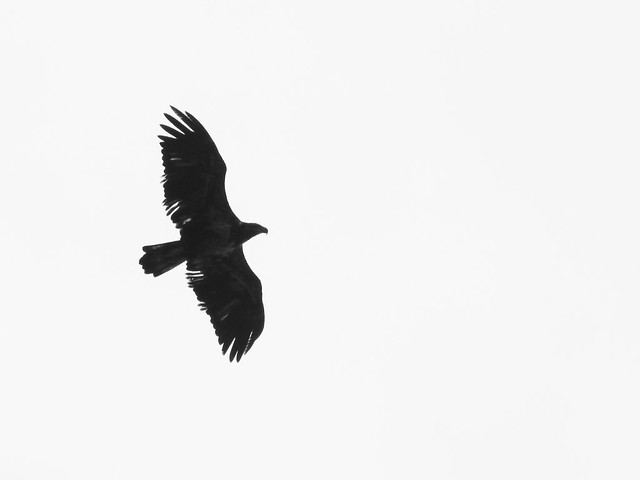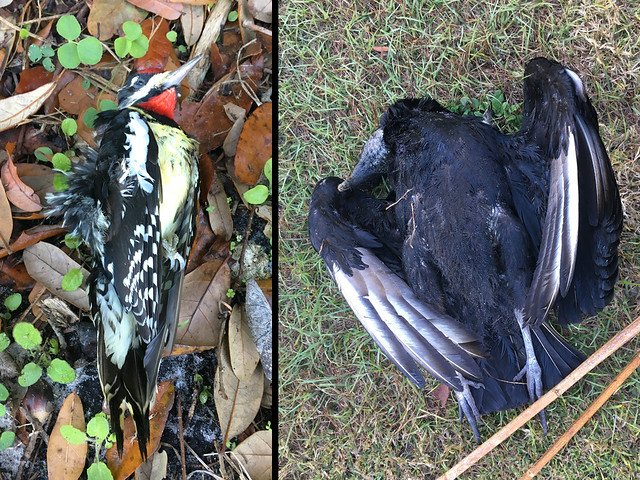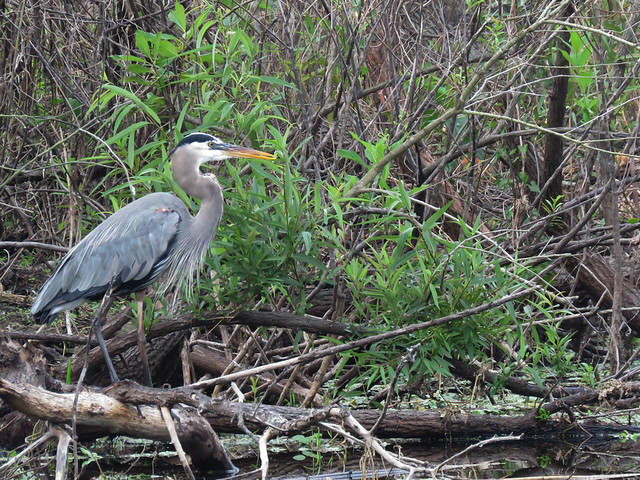I recorded 68 species to my green birding list for February 2017. The complete list is at the end of this post.
Even though I had 20 different local checklists, I didn’t take too many photos. There weren’t really any unexpected birds, either. Anyway, here are some highlights.
The main reason I wasn’t birding as much last year was that running was taking up a lot of my free time. I’ve been trying to give birding more time this year, while keeping up my modest running base. Some of those 20 checklists in February were incidentals while running. This photo of Wild Turkeys along the East Regional Rail Trail was taken with my iPhone on the run.

Wild Turkey flock with displaying males from the East Regional Rail Trail near Green Springs Park, 10-FEB-17

Anhinga & Great Egret at Gemini Springs, 13-FEB-17

Immature Bald Eagle from the Lake Monroe Boat Ramp, 15-FEB-17
Towards the end of the month I had a bummer of a run on a route not frequently taken. Not far from home along the Spring-to-Spring Trail in DeBary I saw a colorful something in the middle of the path ahead of me. I thought it was a candy wrapper, but as I got closer I could see it was a deceased Yellow-bellied Sapsucker. It was so beautiful. It was probably hit by a car. I set it to the side of the path. Later, along a sidewalk in Deltona, I saw what I first thought was a black plastic bag ahead. That turned out to be a dead Black Vulture, probably also hit by a car. I hardly ever see dead birds, and on this run I saw two. 🙁

Deceased Yellow-bellied Sapsucker & Black Vulture, Volusia Co., 20-FEB-17

Great Blue Heron at Mariner’s Cove, 21-FEB-17
That’s it! The last part of the month was taken up by Princess race weekend at Disney World and celebrating my 45th birthday with a walk at Circle B Bar Reserve followed by even more Disney fun. On to March! Here come the migrants!
Green Birding List for February 2017
Muscovy Duck – Cairina moschata
Mottled Duck – Anas fulvigula
Hooded Merganser – Lophodytes cucullatus
Wild Turkey – Meleagris gallopavo
Pied-billed Grebe – Podilymbus podiceps
Wood Stork – Mycteria americana
Double-crested Cormorant – Phalacrocorax auritus
Anhinga – Anhinga anhinga
Great Blue Heron – Ardea herodias
Great Egret – Ardea alba
Snowy Egret – Egretta thula
Little Blue Heron – Egretta caerulea
Tricolored Heron – Egretta tricolor
White Ibis – Eudocimus albus
Glossy Ibis – Plegadis falcinellus
Black Vulture – Coragyps atratus
Turkey Vulture – Cathartes aura
Osprey – Pandion haliaetus
Bald Eagle – Haliaeetus leucocephalus
Red-shouldered Hawk – Buteo lineatus
Red-tailed Hawk – Buteo jamaicensis
Common Gallinule – Gallinula galeata
American Coot – Fulica americana
Limpkin – Aramus guarauna
Sandhill Crane – Antigone canadensis
Killdeer – Charadrius vociferus
Wilson’s Snipe – Gallinago delicata
Lesser Yellowlegs – Tringa flavipes
Ring-billed Gull – Larus delawarensis
Forster’s Tern – Sterna forsteri
Rock Pigeon – Columba livia
Mourning Dove – Zenaida macroura
Belted Kingfisher – Megaceryle alcyon
Red-bellied Woodpecker – Melanerpes carolinus
Yellow-bellied Sapsucker – Sphyrapicus varius
Downy Woodpecker – Picoides pubescens
Pileated Woodpecker – Dryocopus pileatus
American Kestrel – Falco sparverius
Eastern Phoebe – Sayornis phoebe
White-eyed Vireo – Vireo griseus
Blue Jay – Cyanocitta cristata
American Crow – Corvus brachyrhynchos
Fish Crow – Corvus ossifragus
Tree Swallow – Tachycineta bicolor
Carolina Chickadee – Poecile carolinensis
Tufted Titmouse – Baeolophus bicolor
Marsh Wren – Cistothorus palustris
Carolina Wren – Thryothorus ludovicianus
Blue-gray Gnatcatcher – Polioptila caerulea
Ruby-crowned Kinglet – Regulus calendula
American Robin – Turdus migratorius
Gray Catbird – Dumetella carolinensis
Northern Mockingbird – Mimus polyglottos
Orange-crowned Warbler – Oreothlypis celata
Common Yellowthroat – Geothlypis trichas
Northern Parula – Setophaga americana
Palm Warbler – Setophaga palmarum
Pine Warbler – Setophaga pinus
Yellow-rumped Warbler – Setophaga coronata
Yellow-throated Warbler – Setophaga dominica
Prairie Warbler – Setophaga discolor
Northern Cardinal – Cardinalis cardinalis
Painted Bunting – Passerina ciris
Red-winged Blackbird – Agelaius phoeniceus
Common Grackle – Quiscalus quiscula
Boat-tailed Grackle – Quiscalus major
American Goldfinch – Spinus tristis
House Sparrow – Passer domesticus




One Response to Green Birding Southwest Volusia County, February 2017